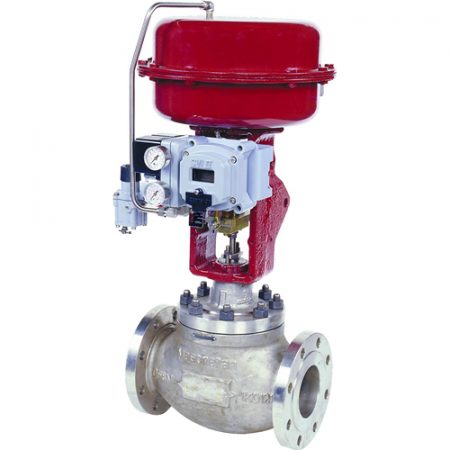Enhancing System Control with High-Performance Control Valves
Enhancing System Control with High-Performance Control Valves
Blog Article

Maximize Energy Financial Savings and Comfort With Advanced Structure Automation Controls
In the world of modern-day style and center administration, the combination of innovative building automation manages stands as a critical improvement. By harnessing the power of automation, structures can adjust, react, and advance in ways that were as soon as inconceivable.
Power Efficiency Perks
Energy efficiency benefits can significantly minimize power intake and functional prices in structures. By executing energy-efficient practices and innovations, building proprietors and operators can accomplish significant savings while also adding to environmental sustainability. One of the key benefits of improving power effectiveness in structures is the reduction of utility expenses. Energy-efficient systems, such as advanced building automation controls, can enhance the use of resources like air conditioning, lights, and heating, bring about reduced power expenses gradually.
In addition, boosted energy performance can lengthen the lifespan of building devices and systems. By operating more efficiently, heating and cooling systems, lighting fixture, and various other building parts experience less deterioration, resulting in reduced upkeep and substitute prices. Furthermore, energy-efficient buildings frequently regulate higher residential property values and rental rates, providing long-term economic advantages to proprietors.
Moreover, power effectiveness can improve owner comfort and efficiency. Properly managed indoor environments with optimal illumination and thermal conditions create a more helpful and pleasant work space, leading to enhanced staff member complete satisfaction and performance. Generally, the energy performance benefits related to innovative structure automation controls are complex, including expense financial savings, ecological stewardship, and owner wellness.
Improved Convenience Control
Enhancing comfort control in structure settings needs an advanced combination of sophisticated automation systems for ideal resident well-being. By making use of innovative structure automation controls, facilities can tailor the indoor atmosphere to satisfy the specific needs and choices of passengers. control valves.
Enhanced convenience control surpasses basic temperature level modifications. It consists of functions such as personalized settings, occupancy sensing units, and all-natural light usage to develop a responsive and vibrant atmosphere. By incorporating these innovative controls, structures can not only enhance comfort however likewise boost power efficiency by optimizing system procedures based on real occupancy and usage patterns. Eventually, focusing on occupant convenience through innovative automation systems results in a more delightful and healthier indoor atmosphere.
Operational Effectiveness Improvements

Moreover, the execution of real-time tracking and analytics devices makes it possible for structure drivers to identify power ineffectiveness and functional anomalies promptly. By continuously monitoring power usage patterns and system performance metrics, modifications can be made in real-time to maximize power consumption and make certain peak functional performance. control valves. In addition, including need feedback strategies right into structure automation controls can better boost operational efficiency by dynamically link adjusting energy use based upon grid conditions and prices signals
Indoor Climate Optimization
Efficient indoor environment optimization is a basic facet of building automation controls, guaranteeing residents' convenience and well-being while maximizing energy savings. By making use of innovative sensing units and controls, constructing automation systems can continually readjust and keep track of temperature, humidity degrees, air high quality, and air flow to develop an optimum interior atmosphere. Preserving comfy and regular problems not just boosts owner fulfillment yet additionally enhances efficiency and overall health.
Interior environment optimization also plays an essential function in power performance. By fine-tuning air conditioning, Going Here heating, and ventilation systems based upon real-time data and tenancy patterns, constructing automation controls can substantially decrease power usage - control valves. For instance, implementing approaches such as demand-controlled ventilation and thermal zoning can assist reduce energy waste while making certain that each location of the structure gets the necessary conditioning.

Lasting Setting Production
Structure automation manages not only maximize interior climate problems for energy efficiency and owner comfort but also lay the structure for producing a lasting setting with strategic management of systems and resources. By incorporating sophisticated building automation modern technologies, such as sensing units, actuators, and smart software program, facilities can keep track of and adjust power usage in real-time to decrease waste and decrease their carbon footprint. These systems allow predictive maintenance, determining possible concerns prior to they rise and enhancing devices efficiency to improve longevity and effectiveness.
Moreover, sustainable atmosphere development extends past power monitoring to encompass water preservation, waste decrease, and interior air quality improvement. Building automation controls can regulate water use, find leaks, and ensure correct garbage disposal practices, adding to general sustainability initiatives. In addition, by regulating and keeping track of air flow and purification systems, these innovations enhance owner wellness and efficiency while decreasing power consumption connected with heating and cooling operations.
Final Thought
To conclude, advanced structure automation regulates deal considerable advantages in regards to energy savings, comfort control, operational efficiency, indoor climate optimization, and creating a sustainable setting. By executing these controls, structures can attain ideal performance while decreasing power usage and boosting owner convenience. blog It appears that the usage of sophisticated automation innovation is vital in boosting building efficiency and producing a more lasting future.
Energy efficiency advantages can substantially reduce energy usage and operational costs in structures. In general, the power efficiency advantages connected with innovative structure automation controls are complex, including price financial savings, ecological stewardship, and owner health.
Additionally, including demand response strategies right into structure automation controls can better improve functional efficiency by dynamically changing energy use based on grid problems and prices signals.
Building automation controls not only maximize indoor climate conditions for power performance and owner comfort yet additionally lay the foundation for creating a lasting atmosphere with tactical monitoring of systems and sources.In verdict, progressed building automation manages offer substantial benefits in terms of energy savings, comfort control, operational performance, interior climate optimization, and creating a sustainable atmosphere.
Report this page